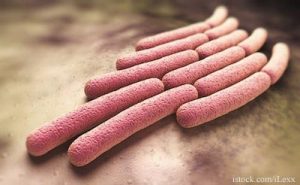A Shigella outbreak at the Mariscos San Juan No. 3 restaurant in San Jose, California has sickened at least 98 people, according to the Santa Clara County Public Health Department. Twenty-four people have been diagnosed with shigellosis, the illness caused by this bacteria. And 12 people are in intensive care units at hospitals as a result of their illness.
 The numbers were updated October 21, 2015 by the Health Department. Public health officials are interviewing and testing all food handlers at the restaurant. The owner and employees of the restaurant are cooperating with the investigation.
The numbers were updated October 21, 2015 by the Health Department. Public health officials are interviewing and testing all food handlers at the restaurant. The owner and employees of the restaurant are cooperating with the investigation.
Health officials in Santa Cruz county are currently investigating five more “suspect cases” that may be linked to the restaurant. What caused this outbreak, and why are people so sick?
First, shigella bacteria are very contagious. It only takes a few bacteria to make someone extremely sick. And the amount of feces needed to cause illness is too small to see with the naked eye. This bacteria causes about 500,000 cases of diarrheal illness in the U.S. every year.
Second, some people can carry the bacteria without having any symptoms. The bacteria are in she stools of infected people. If someone goes to the bathroom, then doesn’t wash their hands properly and then prepares or serves food to others, or touches surfaces that other people touch, the bacteria can be spread. Hands can also be contaminated while changing diapers or caring for a person who has diarrhea.
Third, many food workers work while they are sick. The restaurant industry is notorious for not allowing time off when an employee is sick. And many restaurant workers are paid hourly. If they don’t work, they aren’t paid. Hiding an illness and going to work is common in this industry.
And fourth, the shigella bacteria in this outbreak may be antibiotic-resistant. That can make the illness more difficult to treat, and symptoms may be more serious and longer-lasting.
Quite a few people have been hospitalized in this outbreak. Shigellosis can be a very serious infection. It can cause hemolytic uremic syndrome (HUS), which can cause kidney failure and death. This complication, which is also caused by E. coli O157:H7 infections, is caused by toxins produced by Shigella dysenteriae bacteria. Shigella bacteria can also cause bloodstream infections, and can develop into Reiter’s syndrome, which can cause arthritis.
The seriousness of the outbreak also depends on the health status of people who got sick. Young children are more likely to become seriously ill with this infection. People who have compromised immune systems and chronic illnesses are also more likely to experienced serious complications from shigellosis.
The symptoms of shigellosis appear suddenly and without warning. They include diarrhea that may be bloody, fever, abdominal pain, and tenesmus, a painful sensation of needing to pass stools when the bowels are empty. Symptoms usually appear within 1 to 2 days after exposure. Most people get better within a week, although it may take months before some patient’s GI tracts return to normal.
If you have been treated for shigellosis and don’t feel better within a few days, tell your doctor. The bacteria may be antibiotic-resistant and your doctor will order more tests to see if other antibiotics could treat the infection.
Public health officials are urging anyone who ate at the Mariscos San Juan No. 3 restaurant on October 16 and 17, 2015, and experienced the symptoms of shigellosis, to see a doctor. Identification of patients and proper treatment is necessary to prevent the growth of this outbreak.




